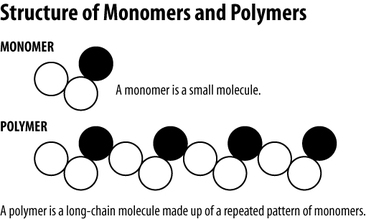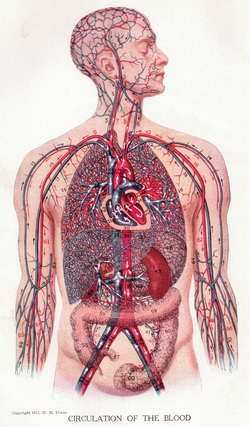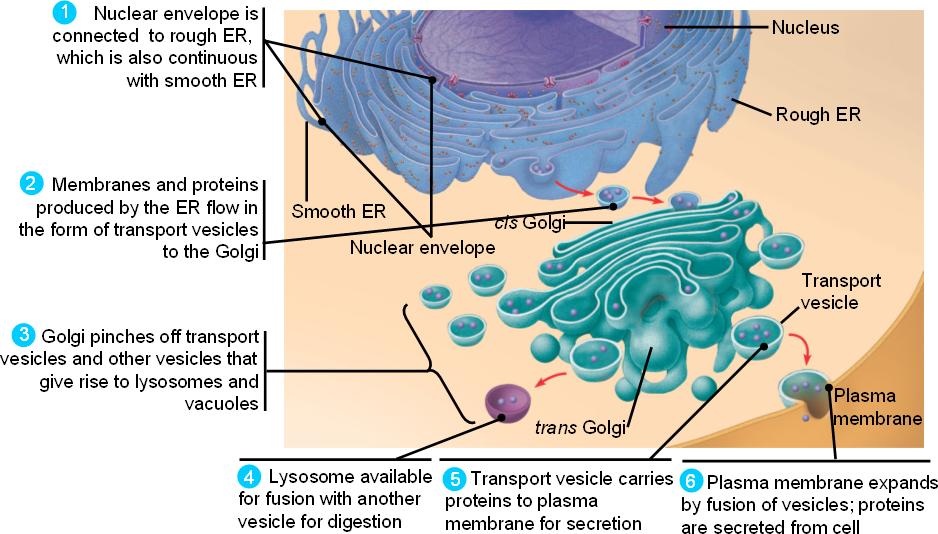- Home
- THE BIG PICTURE OF BIOLOGY
- BIG IDEA 1: EVOLUTION
- 1A: Evolution - Change in Genetic Makeup
- 1B: Evolution by Common Descent
- 1C: Life Continues to Evolve
- 1D: Theories of the History of Life
- BIG IDEA 2: ORGANISMS USE ENERGY AND MOLECULES TO GROW, REPRODUCE, AND MAINTAIN HOMEOSTASIS
- 2A: PHOTOSYNTHESIS, CELLULAR RESPIRATION, AND ENERGY
- 2B: CELL HOMEOSTASIS - CELL MEMBRANE PROCESSES
- 2.C: HOMEOSTASIS - POSITIVE AND NEGATIVE FEEDBACK
- 2.D: Growth and dynamic homeostasis of a biological system are influenced by changes in the system’s environment.
- 2.E: Many biological processes involved in growth, reproduction and dynamic homeostasis include temporal regulation and coordination.
- BIG IDEA 3: LIVING SYSTEMS STORE, RETRIEVE, TRANSMIT, AND RESPOND TO INFORMATION
- 3.A: DNA TRANSCRIPTION AND TRANSLATION
- 3.B: GENE REGULATION - TRANSCRIPTION AND TRANSLATION
- 3C: GENETIC MUTATIONS AND VIRUSES
- 3D: CELL COMMUNICATION AND SIGNAL TRANSDUCTION
- 3E: ANIMAL BEHAVIOR AND NERVOUS SYSTEM
- BIG IDEA 4: BIOLOGICAL SYSTEMS INTERACT IN COMPLEX WAYS
- 4A: BIOCHEMISTRY AND CELL BIOLOGY
- 4.B: Competition and cooperation are important aspects of biological systems.
- 4.C: Naturally occurring diversity among and between components within biological systems affects interactions with the environment.
- RESULTS AND RESOURCES
- AP BIO LABS: BIG IDEA 1 - EVOLUTION
- AP BIO LABS: BIG IDEA 2 -
- AP BIO LABS: BIG IDEA 3
- AP BIO LABS: BIG IDEA 4
Enduring understanding 4A: Interactions within biological systems lead to complex properties.
Essential knowledge 4.A.1: The subcomponents of biological molecules and their sequence determine the properties of that molecule.

a. Structure and function of polymers are derived from the way their monomers are assembled.
1. In nucleic acids, biological information is encoded in sequences of nucleotide monomers. Each nucleotide has structural components: a five-carbon sugar (deoxyribose or ribose), a phosphate and a nitrogen base (adenine, thymine, guanine, cytosine or uracil). DNA and RNA differ in function and differ slightly in structure, and these structural differences account for the differing functions.
2. In proteins, the specific order of amino acids in a polypeptide (primary structure) interacts with the environment to determine the overall shape of the protein, which also involves secondary tertiary and quaternary structure and, thus, its function. The R group of an amino acid can be categorized by chemical properties (hydrophobic, hydrophilic and ionic), and the interactions of these R groups determine structure and function of that region of the protein.
3. In general, lipids are nonpolar; however, phospholipids exhibit structural properties, with polar regions that interact with other polar molecules such as water, and with nonpolar regions where differences in saturation determine the structure and function of lipids.
4. Carbohydrates are composed of sugar monomers whose structures and bonding with each other by dehydration synthesis determine the properties and functions of the molecules. Illustrative examples include: cellulose versus starch.
b. Directionality influences structure and function of the polymer.
1. Nucleic acids have ends, defined by the 3' and 5' carbons of the sugar in the nucleotide, that determine the direction in which complementary nucleotides are added during DNA synthesis and the direction in which transcription occurs (from 5' to 3').
2. Proteins have an amino (NH2) end and a carboxyl (COOH) end, and consist of a linear sequence of amino acids connected by the formation of peptide bonds by dehydration synthesis between the amino and carboxyl groups of adjacent monomers.
3. The nature of the bonding between carbohydrate subunits determines their relative orientation in the carbohydrate, which then determines the secondary structure of the carbohydrate.
1. In nucleic acids, biological information is encoded in sequences of nucleotide monomers. Each nucleotide has structural components: a five-carbon sugar (deoxyribose or ribose), a phosphate and a nitrogen base (adenine, thymine, guanine, cytosine or uracil). DNA and RNA differ in function and differ slightly in structure, and these structural differences account for the differing functions.
2. In proteins, the specific order of amino acids in a polypeptide (primary structure) interacts with the environment to determine the overall shape of the protein, which also involves secondary tertiary and quaternary structure and, thus, its function. The R group of an amino acid can be categorized by chemical properties (hydrophobic, hydrophilic and ionic), and the interactions of these R groups determine structure and function of that region of the protein.
3. In general, lipids are nonpolar; however, phospholipids exhibit structural properties, with polar regions that interact with other polar molecules such as water, and with nonpolar regions where differences in saturation determine the structure and function of lipids.
4. Carbohydrates are composed of sugar monomers whose structures and bonding with each other by dehydration synthesis determine the properties and functions of the molecules. Illustrative examples include: cellulose versus starch.
b. Directionality influences structure and function of the polymer.
1. Nucleic acids have ends, defined by the 3' and 5' carbons of the sugar in the nucleotide, that determine the direction in which complementary nucleotides are added during DNA synthesis and the direction in which transcription occurs (from 5' to 3').
2. Proteins have an amino (NH2) end and a carboxyl (COOH) end, and consist of a linear sequence of amino acids connected by the formation of peptide bonds by dehydration synthesis between the amino and carboxyl groups of adjacent monomers.
3. The nature of the bonding between carbohydrate subunits determines their relative orientation in the carbohydrate, which then determines the secondary structure of the carbohydrate.
Essential knowledge 4.A.2: Cell Organelle structure and function interact and provide essential cell processes.
a. Ribosomes are small, universal structures comprised of two interacting parts: ribosomal RNA and protein. In a sequential manner, these cellular components interact to become the site of protein synthesis where the translation of the genetic instructions yields specific polypeptides.
b. Endoplasmic reticulum (ER) occurs in two forms: smooth and rough
c. The Golgi complex is a membrane-bound structure that consists of a series of flattened membrane sacs (cisternae).
d.Mitochondria specialize in energy capture and transformation
e. Lysosomes are membrane-enclosed sacs that contain hydrolytic enzymes, which are important in intracellular digestion, the recycling of a cell’s organic materials and programmed cell death (apoptosis). Lysosomes carry out intracellular digestion in a variety of ways.
f. A vacuole is a membrane-bound sac that plays roles in intracellular digestion and the release of cellular waste products. In plants, a large vacuole serves many functions, from storage of pigments or poisonous substances to a role in cell growth. In addition, a large central vacuole allows for a large surface area to volume ratio.
g. Chloroplasts are specialized organelles found in algae and higher plants that capture energy through photosynthesis.
b. Endoplasmic reticulum (ER) occurs in two forms: smooth and rough
- Rough endoplasmic reticulum functions to compartmentalize the cell, serves as mechanical support, provides site-specific protein synthesis with membrane-bound ribosomes and plays a role in intracellular transport.
- In most cases, smooth ER synthesizes lipids.
c. The Golgi complex is a membrane-bound structure that consists of a series of flattened membrane sacs (cisternae).
- Functions of the Golgi include synthesis and packaging of materials (small molecules) for transport (in vesicles), and production of lysosomes.
d.Mitochondria specialize in energy capture and transformation
- Mitochondria have a double membrane that allows compartmentalization within the mitochondria and is important to its function.
- The outer membrane is smooth, but the inner membrane is highly convoluted, forming folds called cristae.
- Cristae contain enzymes important to ATP production; cristae also increase the surface area for ATP production.
e. Lysosomes are membrane-enclosed sacs that contain hydrolytic enzymes, which are important in intracellular digestion, the recycling of a cell’s organic materials and programmed cell death (apoptosis). Lysosomes carry out intracellular digestion in a variety of ways.
f. A vacuole is a membrane-bound sac that plays roles in intracellular digestion and the release of cellular waste products. In plants, a large vacuole serves many functions, from storage of pigments or poisonous substances to a role in cell growth. In addition, a large central vacuole allows for a large surface area to volume ratio.
g. Chloroplasts are specialized organelles found in algae and higher plants that capture energy through photosynthesis.
- The structure and function relationship in the chloroplast allows cells to capture the energy available in sunlight and convert it to chemical bond energy via photosynthesis.
- Chloroplasts contain chlorophylls, which are responsible for the green color of a plant and are the key light-trapping molecules in photosynthesis. There are several types of chlorophyll, but the predominant form in plants is chlorophyll a.
- Chloroplasts have a double outer membrane that creates a compartmentalized structure, which supports its function. Within the chloroplasts are membrane-bound structures called thylakoids. Energy-capturing reactions housed in the thylakoids are organized in stacks, called “grana,” to produce ATP and NADPH2, which fuel carbon-fixing reactions in the Calvin-Benson cycle. Carbon fixation occurs in the stroma, where molecules of CO2 are converted to carbohydrates.
Essential knowledge 4.A.3: Interactions between external stimuli and regulated gene expression result in specialization of cells, tissues and organs.

a. Differentiation in development is due to external and internal cues that trigger gene regulation by proteins that bind to DNA. [See also 3.B.1, 3. B.2]
b. Structural and functional divergence of cells in development is due to expression of genes specific to a particular tissue or organ type. [See also 3.B.1, 3.B.2]
c. Environmental stimuli can affect gene expression in a mature cell. [See also 3.B.1, 3.B.2]
b. Structural and functional divergence of cells in development is due to expression of genes specific to a particular tissue or organ type. [See also 3.B.1, 3.B.2]
c. Environmental stimuli can affect gene expression in a mature cell. [See also 3.B.1, 3.B.2]
Essential knowledge 4.A.4: Organisms exhibit complex properties due to interactions between their constituent parts.

Interactions and coordination between organs provide essential biological activities.
To foster student understanding of this concept, instructors can choose an illustrative example such as:
• Stomach and small intestines
• Kidney and bladder
• Root, stem and leaf
Interactions and coordination between systems provide essential biological activities.
To foster student understanding of this concept, instructors can choose an illustrative example such as:
• Respiratory and circulatory
• Nervous and muscular
• Plant vascular and leaf
To foster student understanding of this concept, instructors can choose an illustrative example such as:
• Stomach and small intestines
• Kidney and bladder
• Root, stem and leaf
Interactions and coordination between systems provide essential biological activities.
To foster student understanding of this concept, instructors can choose an illustrative example such as:
• Respiratory and circulatory
• Nervous and muscular
• Plant vascular and leaf
Essential knowledge 4.A.5: Communities are composed of populations of organisms that interact in complex ways.

The structure of a community is measured and described in terms of species composition and species diversity.
Mathematical or computer models are used to illustrate and investigate population interactions within and environmental impacts on a community. [See also 3.E.1]
To foster student understanding of this concept, instructors can choose an illustrative example such as:
• Predator/prey relationships spreadsheet model
• Symbiotic relationship
• Graphical representation of field data
• Introduction of species
• Global climate change models
Mathematical models and graphical representations are used to illustrate population growth patterns and interactions.
Evidence of student learning is a demonstrated understanding of each of the following:
1. Reproduction without constraints results in the exponential growth of a population.
2. A population can produce a density of individuals that exceeds the system’s resource availability.
3. As limits to growth due to density-dependent and density- independent factors are imposed, a logistic growth model generally ensues.
4. Demographics data with respect to age distributions and fecundity can be used to study human populations.
Mathematical or computer models are used to illustrate and investigate population interactions within and environmental impacts on a community. [See also 3.E.1]
To foster student understanding of this concept, instructors can choose an illustrative example such as:
• Predator/prey relationships spreadsheet model
• Symbiotic relationship
• Graphical representation of field data
• Introduction of species
• Global climate change models
Mathematical models and graphical representations are used to illustrate population growth patterns and interactions.
Evidence of student learning is a demonstrated understanding of each of the following:
1. Reproduction without constraints results in the exponential growth of a population.
2. A population can produce a density of individuals that exceeds the system’s resource availability.
3. As limits to growth due to density-dependent and density- independent factors are imposed, a logistic growth model generally ensues.
4. Demographics data with respect to age distributions and fecundity can be used to study human populations.
Essential knowledge 4.A.6: Interactions among living systems and with their environment result in the movement of matter and energy.

a. Energy flows, but matter is recycled. [See also 2.A.1] b. Changes in regional and global climates and in atmospheric
composition influence patterns of primary productivity. c. Organisms within food webs and food chains interact. [See also
2.D.1]
d. Food webs and food chains are dependent on primary productivity.
e. Models allow the prediction of the impact of change in biotic and abiotic factors.Evidence of student learning is a demonstrated understanding of each of the following:
1. Competition for resources and other factors limits growth and can be described by the logistic model.
2. Competition for resources, territoriality, health, predation, accumulation of wastes and other factors contribute to density- dependent population regulation.
f. Human activities impact ecosystems on local, regional and global scales. [See also 2.D.3]
Evidence of student learning is a demonstrated understanding of each of the following:
1. As human populations have increased in numbers, their impact on habitats for other species have been magnified.
2. In turn, this has often reduced the population size of the affected species and resulted in habitat destruction and, in some cases, the extinction of species.
g. Many adaptations of organisms are related to obtaining and using energy and matter in a particular environment.
composition influence patterns of primary productivity. c. Organisms within food webs and food chains interact. [See also
2.D.1]
d. Food webs and food chains are dependent on primary productivity.
e. Models allow the prediction of the impact of change in biotic and abiotic factors.Evidence of student learning is a demonstrated understanding of each of the following:
1. Competition for resources and other factors limits growth and can be described by the logistic model.
2. Competition for resources, territoriality, health, predation, accumulation of wastes and other factors contribute to density- dependent population regulation.
f. Human activities impact ecosystems on local, regional and global scales. [See also 2.D.3]
Evidence of student learning is a demonstrated understanding of each of the following:
1. As human populations have increased in numbers, their impact on habitats for other species have been magnified.
2. In turn, this has often reduced the population size of the affected species and resulted in habitat destruction and, in some cases, the extinction of species.
g. Many adaptations of organisms are related to obtaining and using energy and matter in a particular environment.

